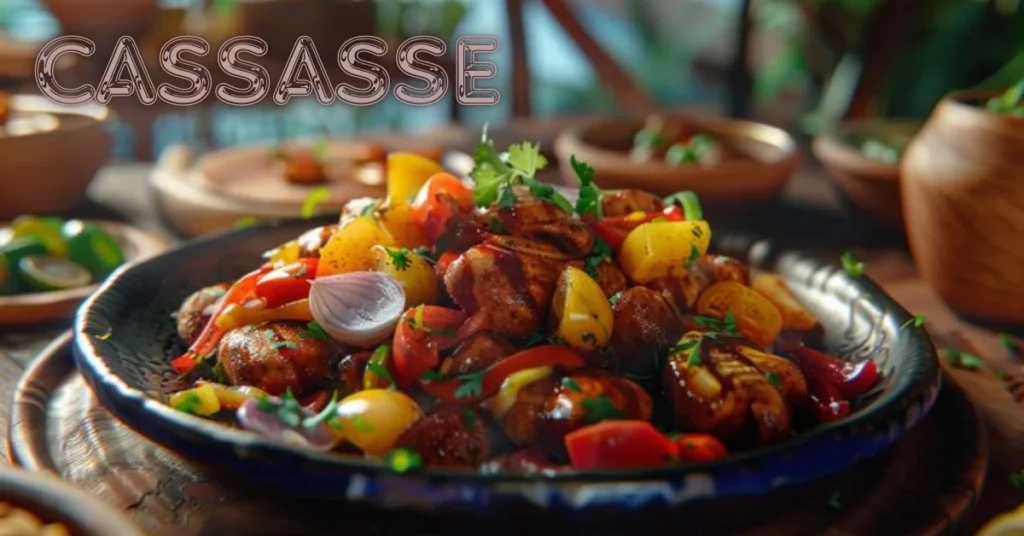The Caribbean is renowned for its vibrant culture, lively music, and, of course, its rich culinary traditions. Among its array of delicious dishes, Cassasse stands out as a true emblem of the region’s heritage. This article delves into Cassasse, exploring its origins, preparation, and significance within Caribbean culture.
What is Cassasse?
Cassasse is a traditional Caribbean dish that embodies the essence of island cuisine. Originating from the Caribbean’s rich culinary history, Cassasse is more than just a meal; it is a celebration of the region’s culture and traditions. Although recipes and ingredients can vary across the islands, Cassasse typically features a mix of locally sourced ingredients, each contributing to its unique flavor profile.
Key Ingredients
Cassava
The star ingredient, cassava, is a starchy root vegetable that forms the base of the dish. Known for its versatility, cassava is a staple in Caribbean kitchens.
Meat or Fish
Depending on the recipe, cassasse may include various types of meat or fish, adding depth and richness to the dish.
Vegetables and Spices
Caribbean spices and vegetables, such as bell peppers, onions, and garlic, are used to enhance the flavor of Cassasse, providing a savory and aromatic experience.
Origins and Historical Significance
Cassasse has deep roots in Caribbean history, reflecting the diverse influences that have shaped the region’s culinary landscape. The dish is a product of the Caribbean’s indigenous cultures, African heritage, and colonial history, each contributing to its development over time.
Indigenous Influence
Cassava, the primary ingredient in Cassasse, was a staple food for the indigenous peoples of the Caribbean. They cultivated cassava and used it in various traditional dishes.
African Influence
The African diaspora brought new cooking techniques and flavors to the Caribbean, incorporating them into local dishes like Cassasse.
Colonial Impact
European settlers and traders introduced new ingredients and cooking methods, further enriching the traditional recipes.
Preparation of Cassasse
Preparing Cassasse involves a blend of skill and tradition, often passed down through generations. The process is typically a communal activity, with family and friends coming together to prepare and enjoy the dish. Here’s a basic overview of how Cassasse is made:
Preparing the Cassava
The cassava root is peeled, grated, and sometimes soaked to remove its natural bitterness. It is then cooked until tender.
Cooking the Meat or Fish
Meat or fish is seasoned with a blend of Caribbean spices and cooked until it is tender and flavorful.
Combining Ingredients
The cooked cassava is mixed with the meat or fish, along with vegetables and spices. The mixture is often simmered to allow the flavors to meld.
Serving
Cassasse is traditionally served hot, often with sides like rice or fried plantains. It’s enjoyed as a hearty and satisfying meal.
Cultural Importance of Cassasse
Cassasse holds a special place in Caribbean culture for several reasons:
Celebratory Dish
Cassasse is often prepared for special occasions and family gatherings, symbolizing togetherness and cultural pride.
Culinary Heritage
The dish represents the fusion of various culinary traditions, making it a testament to the Caribbean’s rich and diverse heritage.
Community Bonding
The preparation and enjoyment of Cassasse bring people together, reinforcing community bonds and preserving culinary traditions.
Modern Adaptations and Variations
While traditional Cassasse remains beloved, modern adaptations have emerged, reflecting contemporary tastes and dietary preferences. Some variations include:
Vegetarian Cassasse
A plant-based version that omits meat or fish, focusing on the rich flavors of cassava and vegetables.
Fusion Cassasse
Creative twists on the classic dish, incorporating ingredients from other cuisines while maintaining its Caribbean essence.
Conclusion
Cassasse’s is more than just a dish; it is a vibrant expression of Caribbean culture and history. From its roots in indigenous practices to its evolution through African and European influences, Cassasse’s embodies the rich tapestry of the Caribbean’s culinary heritage. Whether enjoyed in its traditional form or as a modern adaptation, Cassasse’s continues to be a cherished part of Caribbean cuisine, bringing people together and celebrating the region’s diverse and flavorful history.
For those seeking to explore Caribbean culinary traditions, Cassasse’s offers a delicious and meaningful introduction to the region’s rich gastronomic landscape. Its blend of history, culture, and flavor makes it a truly remarkable dish that continues to capture the hearts and palates of people around the world.
FAQs
What is Cassasse’s?
Cassasse’s is a traditional Caribbean dish made from cassava, often combined with meat or fish, and seasoned with local spices and vegetables.
How is Cassasse’s prepared?
Cassasse’s is prepared by grating and cooking cassava, then mixing it with cooked meat or fish and spices. The mixture is simmered to blend the flavors.
What are the main ingredients in Cassasse’s?
The main ingredients in Cassasse’s are cassava (a starchy root vegetable), meat or fish, vegetables, and Caribbean spices.
Why is Cassasse’s significant in Caribbean culture?
Cassasse’s is significant because it reflects Caribbean heritage, celebrates special occasions, and brings people together through traditional culinary practices.
Are there modern variations of Cassasse’s?
Yes, modern variations include vegetarian versions and fusion adaptations that incorporate ingredients from other cuisines while retaining the essence of the traditional dish.







